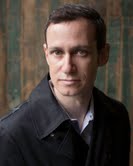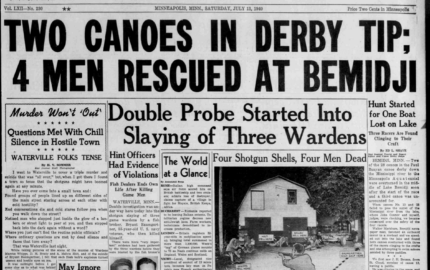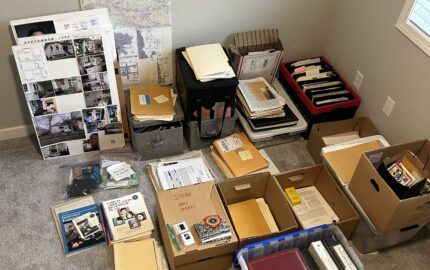Brendan Koerner’s recent Wired piece about Alfred Anaya, a “genius at installing secret compartments in cars,” was nothing short of delicious as a piece of storytelling and discovery. Sure, someone’s out there fabricating automotive hidey-holes for smuggled drugs and other contraband, but how often do readers get to put a face and a backstory to that niche subculture? Anaya's situation came to light after a certain customer brought in his outfitted truck, saying his “trap” (as it turns out a stash spot is known) was stuck — and that he wanted it unstuck:

Voilà, a narrative turning point. Koerner's tale involves subwoofers, snitchery, pro ballers, cocaine, the DEA, foreclosure, prison. Listen to Koerner — whose new book, The Skies Belong to Us: Love and Terror in the Golden Age of Hijacking, will be published in June — explain how he found this marvelous yarn and what he (and every good narrative writer) looks for in Story:
For more installments of "How'd you find that story?" go here.
Anaya was unsettled by this request, for he had suspicions about the nature of Esteban’s work. There is nothing intrinsically illegal about building traps, which are commonly used to hide everything from pricey jewelry to legal handguns. But the activity runs afoul of California law if an installer knows for certain that his compartment will be used to transport drugs. The maximum penalty is three years in prison. Anaya thus thought it wise to deviate from his standard no-questions-asked policy before agreeing to honor his warranty. “There’s nothing in there I shouldn’t know about, is there?” he asked. Esteban assured him that he needn’t worry.

Voilà, a narrative turning point. Koerner's tale involves subwoofers, snitchery, pro ballers, cocaine, the DEA, foreclosure, prison. Listen to Koerner — whose new book, The Skies Belong to Us: Love and Terror in the Golden Age of Hijacking, will be published in June — explain how he found this marvelous yarn and what he (and every good narrative writer) looks for in Story:
Journalists are conditioned to dismiss press releases as inbox-clogging irritants, and for good reason: 99.8 percent of them contain nothing more than vapid boasts about trivial events. As a general rule, there are no great stories to be found in blindly disseminated documents that describe mundane news in the most hyperbolic terms possible. (“A revolutionary new [X] that will break new ground!”)
But when I’m scouting for new stories to pursue, I do pay close attention to the press releases issued by the various United States Attorneys’ Offices—particularly the offices located in parts of the country that receive too little attention from New York-based reporters such as myself. Sifting through those releases once helped me find a tale I wrote back in 2011, about a Cuban-Latvian slot-machine hacker who ran afoul of the law. And so in January 2012, I went hunting for another true-crime yarn amidst the flotsam and jetsam of the U.S. Attorneys’ press-release archives.
I spent hours reading about scores of cases that, while salacious in some respects, offered little in the way of narrative arc: felons convicted of possessing handguns, bank robbers who foolishly crossed state lines, drug addicts who used counterfeit bills. I was close to giving up the search when I came across a press release dated February 18, 2011, from the District of Kansas. It announced that three participants in a drug-trafficking ring had been found guilty of conspiring to distribute large quantities of cocaine and meth. The paragraph that jumped out at me was this one, concerning the crimes of a defendant named Alfred Anaya:
Evidence showed Anaya’s role in the conspiracy included installing a hidden compartment in a 2006 Honda Ridgeline, for which he was paid more than $3,500. He also installed a hidden compartment in a Toyota Sequoia.
Wait a second, I thought. This guy was convicted as a full-fledged drug trafficker, but he just installed compartments? I had never heard of such a thing, and I was naturally intrigued not just by the legal aspects of Anaya’s prosecution, but also by the technical minutiae of his unusual craft. I tried to dig a little deeper in that lazy Google-search way, but found that virtually nothing else had been written about the case. So I jotted down Anaya’s name in my story-ideas queue, as a reminder to investigate further at some undetermined future date. And I wrote a quickie post on my blog, which I’ve come to regard as a sort of public scratch paper.
Two or three weeks later, I went out for drinks with a writer pal of mine, a guy who’s always working on one amazing project or another. After he got done telling me about his next fantastic narrative endeavor, it was my turn to discuss my work-in-progress. But I had nothing in the hopper at that moment. So what could I share, to prove that I was on the ball?
The Anaya case popped to mind. I told my pal what I knew so far, and why I thought the story might resonate with Wired’s savvy readers. As I talked everything out over a tall glass of Bushmills, I realized that I was more in love with the idea than I had realized, and that there was no way on Earth I wasn’t going to write this piece.
For more installments of "How'd you find that story?" go here.


